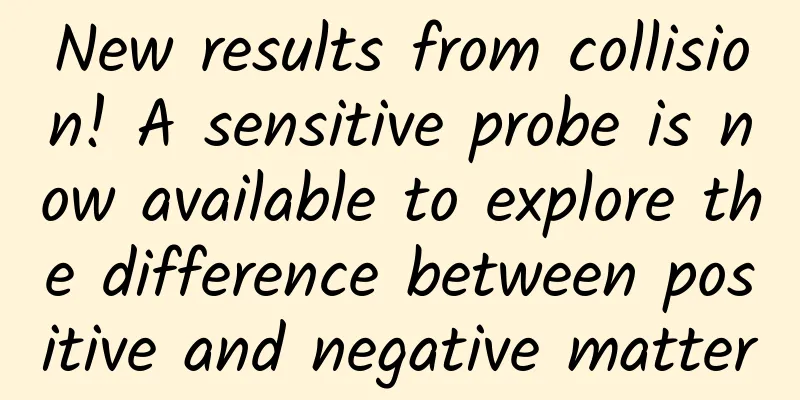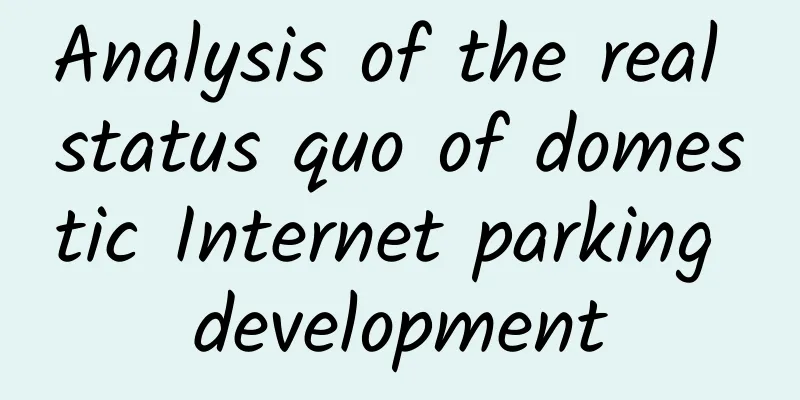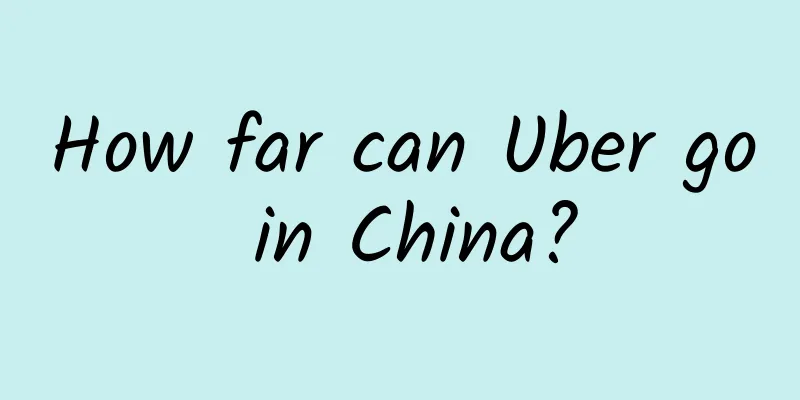The Great Reconstruction: The Death and Rebirth of Television

|
After the emergence of the Internet, traditional media industries such as newspapers, magazines and music have been completely restructured, and new products have replaced old ways of playing and become the mainstream of the market. However, why has the television industry been able to stand firm and maintain its strong vitality? What functions did television provide for people's daily lives, and which Internet products will eventually replace these functions? The reason why the television industry has not been completely replaced by the Internet today is that, in addition to the high cost of video content (production and consumption) in the past, as well as factors such as copyright and audio-visual licenses, television provides a variety of functions for people's daily lives. Although the complete disintegration and reconstruction of the television industry will definitely come, Internet products that can replace these functions have only gradually grown in the past decade. When these products have snatched the attention of television users, snatching the brand advertising revenue of television has become a natural thing.Then, perhaps, the television industry will be truly dead. Restructuring will take time, but the future is inevitable. The changes that the Internet has brought to the media industry are almost too obvious to be explained. However, the media industry covers a wide range of fields: from a website to Disney Studios, they can all be considered media. The media actually includes a variety of forms, categories and business models. If we look at different categories of the media industry, the impact of the Internet on them and their future prospects are very different. 1. Traditional Media Before the Internet, almost all media followed the same operating model: In this system, the profit model mainly consists of two parts: channels and integration. Moreover, the order is very important. Channels must come first, then integration can come. Whether it is a printing press, radio broadcast, physical media, or audio-visual license, building a channel requires large-scale upfront investment, and the ultimate reward is that the company that controls the channel can continue to make a lot of money. Printing Industry: Newspapers and magazines make money primarily by combining editorial and advertising into one publication. Music industry: Record companies make money by integrating new songs and old songs into one album. At the same time, the new songs themselves will gradually become old songs over time. The key is that the copyright of the old songs still belongs to the long-form company. Wireless television: The model of wireless television is similar to that of the printing industry. By controlling the channel (through a broadcasting license), television programs and advertisements can be combined. Cable TV combines the wireless TV model with bundling sales (a bunch of niche programs), which is a special form of integration. 2. The Economics of Bundling It’s important to understand the economics of bundling, and Chris Dixon has written authoritatively about it: “In most business models based on information symmetry, bundling is a win-win for both the buyer and the seller. For example, in the following simple model, there are two cable TV consumers, one of whom is a “sports fan” and the other is a “history fan.” "What should the cable company charge to maximize revenue? Note that the optimal price is always slightly below the consumer's "willing price," otherwise the consumer will not be able to make a profit from the purchase. For simplicity, assume that the sales price is 90% of the "willing price." If ESPN and the History Channel were sold separately, the revenue-maximizing price would be $9 (90% of $10). Sports fans subscribe to ESPN, and history fans subscribe to the History Channel. The cable company would receive $18 in revenue." "By bundling the two programs, the cable company can charge each consumer $11.7 (90% of the $13), and the combined revenue (two customers) is $23.4. The consumer saves $2 in the unbundled model and $2.6 in the bundled model. So it seems that both buyers and sellers benefit from bundling." The key thing to understand is that while control of channels makes cable TV bundling possible, the underlying economic logic has nothing to do with the channels: if consumers like more than one thing, then both the channel and the consumer can benefit from a successful bundling. 3. What happens when channel costs are zero? From a business perspective, the most important impact of the Internet is to reduce channel costs to zero. The hardest hit were print publications, for a simple reason: once newspapers and magazines lost their channel-based monopoly on readers' attention, the integration of editorial and advertising was disrupted. Advertisers can now reach their target customers directly, first through online advertising alliances, and later through Google and Facebook. At the same time, users can independently access any text publication in the world. For Google and Facebook, the user-plus-advertiser model is the new integration, with attention reclaimed by the two giants and editorials in newspapers and magazines left without a place to stand. On the other hand, compared to the newspaper industry, the music industry has been relatively free from some of the adverse effects of the Internet. Although piracy has driven the record industry into the arms of Apple and has led to the fragmentation of record albums into individual songs, the Internet has encouraged the bundling economy for new and old songs as a whole: more and more users are willing to pay $10 a month to get any music, which has greatly increased the average revenue per customer. As a result of this change, the current situation of the music industry is still very similar to that before the advent of the Internet: Note that under this system, both Spotify and Apple have very little control over the music industry as a whole. From a purely economic perspective, neither has a large enough user base to completely control the content producers (the musicians), and neither of them owns the copyright to the old albums (so they can't sell new songs based on them). Therefore, unlike the newspaper industry, record companies have established an industrial chain that goes beyond traditional channels, and they themselves have not been replaced in the Internet era. That leaves the fascinating world of television, which has always been enduring and has been resistant to the effects of the internet thanks to a number of factors: First, more than a decade ago, the Internet did not mean that the absolute channel cost was zero: online video required considerable bandwidth, and most people at that time could not use it anytime and anywhere. On the other hand, it was not only difficult but also costly to produce attractive content, which was in sharp contrast to the text publishing and music industries. This meant that the Internet was relatively weak in terms of competitiveness against the television industry at that time. Secondly, advertisers, especially brand advertising, choose television media not because it is the only choice (newspapers were the only choice at the time), but because the return on investment of television media is extremely high. Television ads are not only more attractive than print ads, but also can reach a large number of potential customers at a relatively low price and with relatively few resources (more on this later). Third, as mentioned earlier, cable TV bundling has its own economic principles, which apply not only to TV programs and cable operators, but also to consumers. The first reason, especially the lack of bandwidth, has become less important in recent years. What is really interesting about the television industry is that it is not just a single industry, nor is it just a medium of communication. To understand the future development of the television industry, it is necessary to divide it into different components and observe and analyze them one by one. 4. Functions of Television Television plays the following roles in our daily lives: We get the latest news on television; we watch educational content on television; we watch live sports games on television; we watch stories (movies and TV series) on television; we escape reality on television (television is the antidote to boredom). In today's era, the first two roles of television have undoubtedly been replaced by the Internet: only the elderly get news through TV, and even if TV has 200 channels, it will not be able to spread such high-quality and extensive educational content like YouTube or educational websites. So, my question is, how long can the television industry maintain its advantage in the latter three functions? The path of television's decline might go something like this: A radically different new model emerges that offers better live sports, better movies and TV shows, or more effective escapism. This completely different new model will steal users' attention, and when television can no longer attract a sufficient number of viewers and cannot arouse enough attention, the edifice of the television industry will collapse in an instant. I have argued in the past that television’s escapist function would be the next to be replaced for several reasons: The ecosystem of live sports broadcasting is completely tied to the pay-TV model, which will be the last pillar supporting the television industry. Traditional TV companies still play a vital role in providing venture capital and start-up support for good scripts. Netflix is the most promising competitor to traditional TV companies in this regard. In a sense, escapism is indifferent; as long as our minds are escaping reality, it doesn’t matter what method we use. But escapism is also very personalized, and the more customized the escapism, the more satisfying it is. This is why there are thousands of TV channels. However, the number of TV channels will never be as many as the number of mobile apps. I was partially right, and the function of escapism was indeed about to be replaced, but not because of the emergence of a large number of apps, but because of the emergence of a specific app: Facebook. 5. Facebook, Snapchat and escapism In 2015, I wrote: “Mobile use takes up all available time. We only put down our phones when we have something to do, and the fragmented time in our lives is far greater than anyone imagines. This is a huge market, and to fill this gap, in terms of the number of potential users and the amount of fragmented time, a perfect product will be born: a way to pay attention to, interact with and communicate with family and friends.” “And while we use computers for specific purposes, what we most want to do with our free time is connect with other people: as Aristotle said long ago: ‘Man is by nature a social animal.’” "So Facebook became a habit, with billions of people using its mobile app." Essentially, Snapchat is challenging Facebook in this regard, and one of the big questions to watch in 2017 is whether this is the year the two companies finally make the transition from stealing TV’s attention to stealing TV’s commercials. Facebook is laying the groundwork for this, having long been involved in video and recently adding custom video slots within its app. However, Facebook still lacks a proprietary advertising platform that can compete with TV for brand advertising. Currently, Facebook’s choice of advertising, whether in terms of its product form or its focus on precise delivery, is designed for direct marketing (direct marketing). Direct selling is indeed very suitable for digital advertising, because the key point of advertising is to increase the conversion rate and ultimately reach direct consumer behavior. At the same time, the advantage of online advertising is that it can not only accurately measure whether a conversion has occurred, but also locate the potential customers who are most likely to be converted in the first place. However, brand advertising is very different. Direct sales focuses on the bottom of the marketing funnel, which is consumer behavior. Brand advertising, on the other hand, allows end users to learn about your products at the first opportunity and build awareness and intimacy with your brand. In fact, brand advertising can be seen as an upfront investment in future returns. The biggest mistake Facebook has made over the years is trying to win brand advertising by offering direct marketing results: Facebook has spent a lot of time and money trying to monitor and track the relationship between brand-focused ads and final purchases, which is not only technically difficult to achieve, but what if the purchase occurs far in the future? Or what if it happens offline? In fact, Facebook completely misunderstands what is most important to brand advertisers. As mentioned above, brand advertisers believe that TV advertising can provide a high return on investment. Facebook, which is obsessed with tracking data, focuses too much on "return" and wastes a lot of "investment". Specifically, if you want to make good use of Facebook's monitoring and tracking functions, marketers need to invest a lot of time and energy. In fact, it is not as simple and efficient as directly placing TV ads to a group of people. That’s why Procter & Gamble, the world’s largest TV advertiser, has scaled back its resources on monitoring and tracking its advertising on Facebook. Facebook is doing two things to change its value proposition for brand advertisers: First, Facebook is said to be launching new video ads that will run during video playback, somewhat like TV ads. Second, Facebook is more focused on becoming a massive advertising platform, a bit like cable TV, but better, and also able to track results. This makes it less of a measurement machine: target individuals and then track whether they sign up for a membership at a department store. The second point is a clear shift: In last quarter’s earnings report, COO Sheryl Sandberg said: “Facebook enables brand advertisers to run large-scale brand advertising in the same way they do on TV, but in a more targeted way.” However, just a year ago, Facebook still emphasized "personalized marketing at a certain scale" and the need to measure the "input-output ratio." I think this is the right shift for Facebook, but it also shows why Snapchat is its biggest competitor: because Facebook has its users' information, Snapchat is unlikely to pose a serious challenge to its direct marketing advertising revenue. However, for brand advertising, scale is more important than user identity, so Snapchat's competition for attention, especially its influence among young users, poses a huge threat to Facebook. This is not a good thing for the TV industry. Facebook and Snapchat have already taken away TV's "escapist" function and grabbed attention. It's only a matter of time before they take over TV's advertising share. 6. Netflix and Storytelling Meanwhile, Netflix is the hope for the future, competing for end users by commoditizing time and creating conditions for “contracting” content providers. (Time commodification: For example, Netflix does not have a so-called prime time, all new dramas can be broadcast at once instead of two episodes a day, etc., because its "time commodity" is unlimited, any user can watch any program at any time, which is impossible for cable TV.) (Subcontracted content producers: Traditional TV companies integrate content and production, while subscriptions and channels are subcontracted. Netfilix distributes the content production part to content providers, while it integrates the production, subscriptions and channels behind the industry chain.) Interestingly, the situation in the television industry is very different from that in the music industry. Unlike record companies that use the rights to old songs to maintain exclusivity on new albums, most traditional TV companies sell their scripts to Netflix, giving the emerging unicorn the opportunity to compete with them and slowly taking over the market for new dramas. The reason for this is obvious. TV companies would rather care about and protect the revenue from their lucrative pay TV segment than support their online video business. The big difference in the music industry is that the old, album-based business model of record companies has been destroyed, and change is easy when there is nothing to lose. 7. Big Refactoring It is worth noting that the functions of escaping reality and watching stories are slowly being stripped away from traditional television. More importantly, these two things are happening at the same time. When the functions that television once provided to viewers are reconstructed, the scene may look like the following picture: First, the new winners will have models that look a lot like the one that disrupted the publishing industry: by owning the end user, these companies either earn revenue directly (Netflix) or provide a competitive platform for advertisers. Content producers are commoditized in the process. Second, all of these features (except live sports) have been restructured into different services, which means that they will no longer be part of the bundle economy. This means that the most important driving force that holds the TV ecosystem together has been greatly weakened. Bundling makes sense when users can get their second and third level preferences at a lower price, but what happens when there are no more second and third level preferences to offer because they have been refactored into other services? To put this concept into context, the vast majority of discussions about pay TV focus on ESPN and sports. Disney, a money-making machine, sold off 90% of its legacy business (a guarantee of market share) for higher licensing fees. The subsequent result was a faster decline in subscribers than pay TV as a whole, leading many to question Disney’s long-term prospects. Yet the fact is that ESPN has long been the most stable element of the cable bundle economy: It's the only TV feature left, thanks to its long-term and relentless investments in rights. In fact, what may end up happening is not that ESPN is unbundled and de-channeled, but that a cable subscription becomes, in effect, a live sports subscription, with ESPN at the center of the system making money by charging high licensing fees to a much-reduced number of cable channels. Frankly, that’s not such a bad outcome. To be sure, all of this analysis will take time to play out. In fact, I've always criticized cable advocates for making the same predictions for 20 years. It's much easier to predict that the big restructuring of the TV industry will happen than to predict when or how it will happen. This article is my best guess as to how the big reconfiguration will happen. As for when it will happen, we can see that the changes that have taken place in the past three years are huge. Most of these changes are laying the foundation for real transformation. Once these shifts begin to happen in earnest, a series of feedback loops will emerge from commercial advertising to content production to user consumption, accelerating changes in each other and ultimately forming a restructured media industry that affects all levels of society. And all of this may come faster than many people expect. As a winner of Toutiao's Qingyun Plan and Baijiahao's Bai+ Plan, the 2019 Baidu Digital Author of the Year, the Baijiahao's Most Popular Author in the Technology Field, the 2019 Sogou Technology and Culture Author, and the 2021 Baijiahao Quarterly Influential Creator, he has won many awards, including the 2013 Sohu Best Industry Media Person, the 2015 China New Media Entrepreneurship Competition Beijing Third Place, the 2015 Guangmang Experience Award, the 2015 China New Media Entrepreneurship Competition Finals Third Place, and the 2018 Baidu Dynamic Annual Powerful Celebrity. |
<<: BYD's journey to Japan was difficult after selling 15 cars in three years
>>: Money comes in but cars are not produced: Internet car companies are in trouble
Recommend
Most of the time, no one reads your information flow copy because of this mistake!
When writing copy for a product or promotion , ma...
Marketing promotion planning: 80% of event planning mistakes are easy to make!
Every marketing planner hopes that his or her act...
The discovery of the battery was an accident
Batteries are indispensable in our daily lives, b...
Refined operational skills for overseas e-commerce!
Why do we need refined operations? I believe many...
iOS channel first release rules and contact list
91 Assistant 1. First Release Form During the ini...
Android phone RAM can no longer be rolled up, good quality and low price are the best
As the 2022 Android flagships debut one after ano...
The Origin of Qixi Festival Story Summary Qixi Festival Cowherd and Weaver Girl Story Summary
The Qixi Festival, a festival for begging for cle...
How to effectively formulate an advertising plan and reduce advertising costs?
If you don’t advertise, you’re waiting for death;...
How deep is your misunderstanding of the Ghost Festival?
Today is the 15th day of the seventh lunar month,...
How to evaluate the pros and cons of multiple promotion channels?
I have always wanted to write an article like thi...
Did the jujube tree at the netizen's grandmother's house suddenly go "crazy"? Is it contagious? The truth is actually like this!
Recently, many people have seen a video: a netize...
Learn these 7 techniques, and even beginners can play Douyin in minutes
Recently, I often see complaints about Douyin in ...
How do popular products come about? Ideas for selecting products for second-category e-commerce advertising!
You place orders as aggressively as a tiger, but ...
The World Health Organization says walking is the best exercise? It depends on how you walk
gossip We often hear this statement: WHO says wal...
Common properties for Android development
1. Add spaces between text in android string.xml ...









